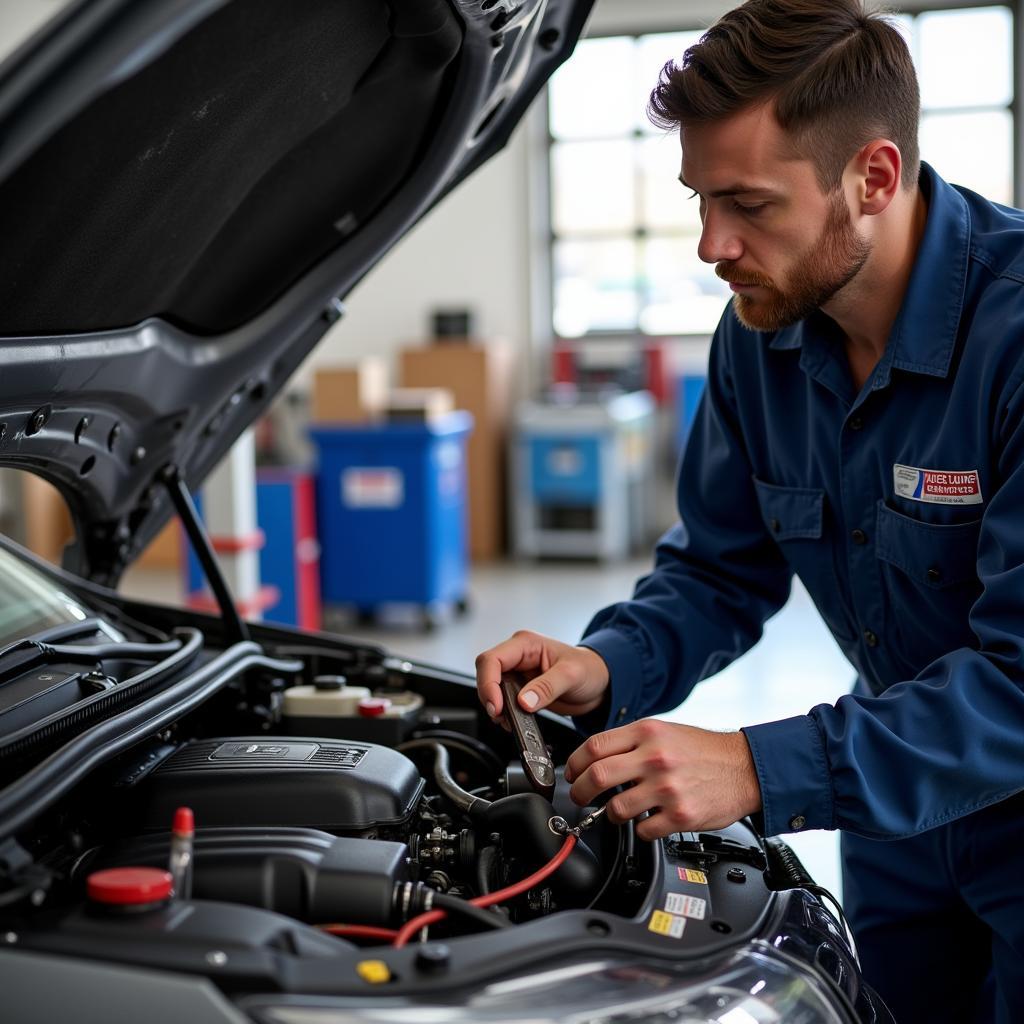The Takata airbag problem has affected millions of vehicles worldwide, posing a serious safety risk to drivers and passengers. This guide offers comprehensive information for car owners, mechanics, and technicians on how to identify, understand, and address the Takata airbag issue.
Understanding the Takata Airbag Recall
The Takata airbag recall is one of the largest and most complex automotive recalls in history. The core issue lies in the airbag inflators, which can rupture violently upon deployment, sending metal fragments into the cabin. This can cause serious injuries or even fatalities. The problem stems from the use of ammonium nitrate as a propellant without a proper desiccant, making it susceptible to degradation due to moisture and temperature fluctuations.
What makes the Takata airbag issue so serious?
The sheer scale of the recall is a significant concern, affecting vehicles across numerous makes and models. The potential for catastrophic injury or death from a faulty airbag inflator underscores the severity of this issue.
Identifying Affected Vehicles
Determining whether a specific vehicle is affected by the Takata airbag recall can be challenging. Several online resources can assist you in this process. The National Highway Traffic Safety Administration (NHTSA) website provides a VIN lookup tool, allowing you to check if your car is included in the recall. Manufacturer websites also offer recall information specific to their vehicles. It’s crucial to remember that recalls are often staged, meaning not all affected vehicles are notified simultaneously. Regularly checking for updates is essential.
How can I check if my car has a Takata airbag?
You can easily verify if your car is affected by using the NHTSA VIN lookup tool or checking your manufacturer’s website for recall information. Remember to check periodically, as new vehicles may be added to the recall list.
Getting Your Airbag Replaced
If your vehicle is part of the recall, contact your dealership immediately to schedule a free repair. The replacement process usually involves replacing the faulty inflator with a new, safer one. While some dealerships may offer loaner vehicles during the repair, availability can vary. Be sure to inquire about this when scheduling your appointment.
Is the Takata airbag replacement free?
Yes, the replacement of a recalled Takata airbag is completely free of charge. This is covered by the manufacturer as part of the recall.
Preventing Further Issues
While awaiting repair, consider parking your vehicle in a shaded area, especially in hot and humid climates. This can help minimize the degradation of the ammonium nitrate propellant and potentially reduce the risk of rupture. However, it’s crucial to understand that this is not a guaranteed solution, and getting the airbag replaced is the only definitive fix.
What should I do while waiting for my airbag replacement?
Parking your car in a shaded area can help mitigate the risk but getting the airbag replaced remains the most important action. Check with your dealership about loaner car availability while you await the repair.
Beyond the Recall: Ongoing Vigilance
Even if your car isn’t currently listed under the Takata airbag recall, it’s wise to remain vigilant. Older vehicles, even those not initially included, may be added to the recall list in the future. Regular checks and prompt action are crucial to ensuring your safety and the safety of your passengers.
“The Takata airbag situation highlights the importance of proactive car maintenance. Regularly checking for recalls, regardless of your vehicle’s age, is a simple yet crucial step in ensuring safety,” says John Miller, Senior Automotive Safety Expert at the National Automotive Safety Institute.
“Don’t delay getting your airbag fixed if your vehicle is affected. It’s a free repair that could save your life,” adds Susan Davis, Lead Mechanic at Davis Auto Repair.
Conclusion
The Takata airbag problem remains a significant concern for car owners. Understanding the issue, identifying affected vehicles, and taking prompt action are crucial steps. By staying informed and taking proactive measures, you can mitigate the risks associated with these faulty airbags. For any further assistance or inquiries, please feel free to contact AutoTipPro at +1 (641) 206-8880 or visit our office at 500 N St Mary’s St, San Antonio, TX 78205, United States. We’re here to help you navigate the Takata airbag problem and ensure your safety on the road.
FAQ
-
What is the main cause of the Takata airbag problem?
The use of ammonium nitrate without a proper desiccant in the inflators makes them vulnerable to moisture and temperature changes, leading to potential rupture. -
How do I know if my car is affected by the recall?
Use the NHTSA VIN lookup tool or check your manufacturer’s website. -
Do I have to pay for the airbag replacement?
No, the replacement is free of charge under the recall. -
How long does the airbag replacement take?
The replacement process typically takes a few hours. -
What should I do if my car is part of the recall?
Contact your dealership immediately to schedule a free repair. -
Can I still drive my car if it has a Takata airbag?
While you can still drive, it’s best to schedule a replacement as soon as possible. -
Are all Takata airbags dangerous?
Not all Takata airbags are defective, but those using the specific ammonium nitrate propellant without a proper desiccant are the concern.







Leave a Reply